Bust of an unknown man
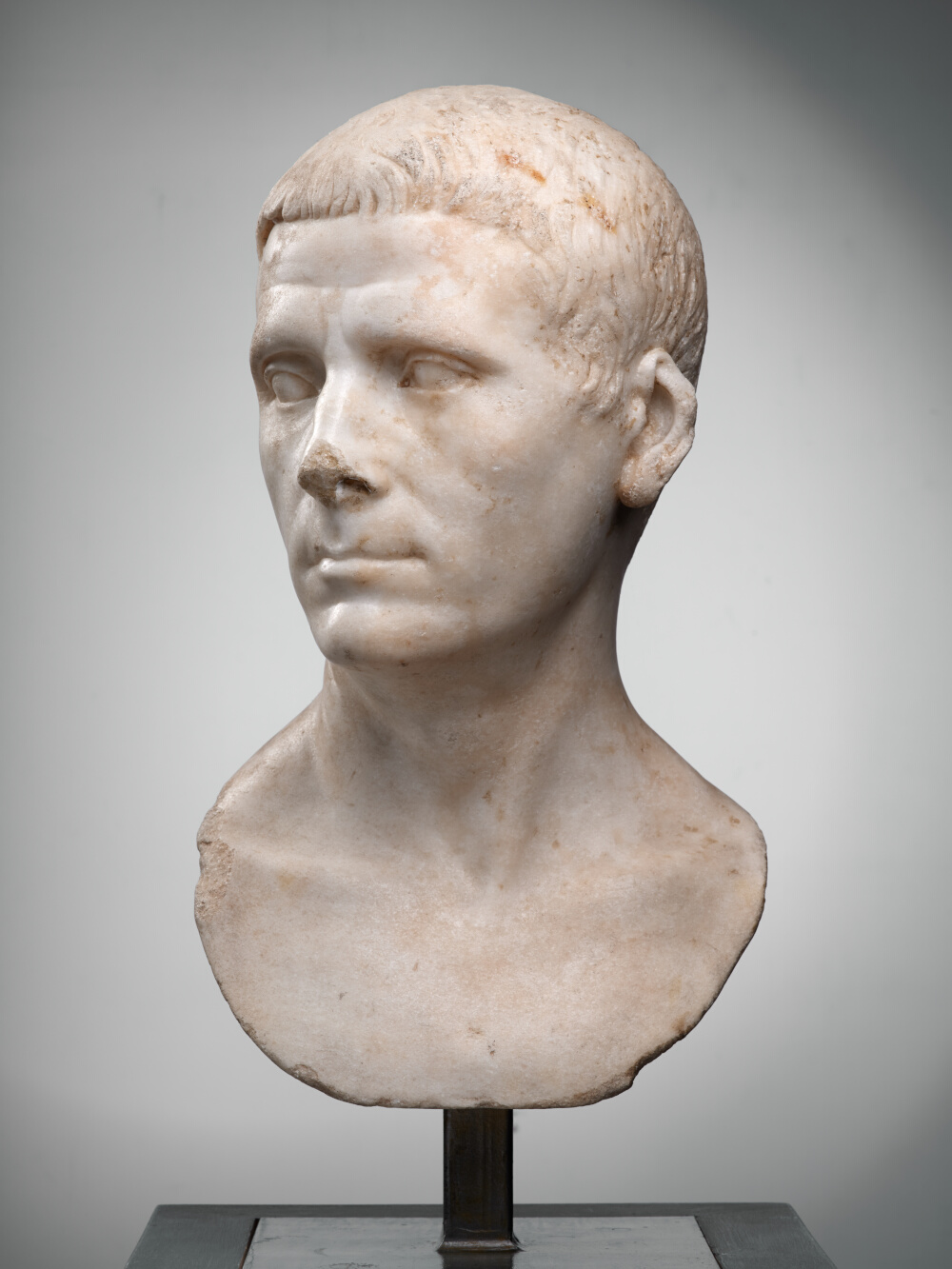
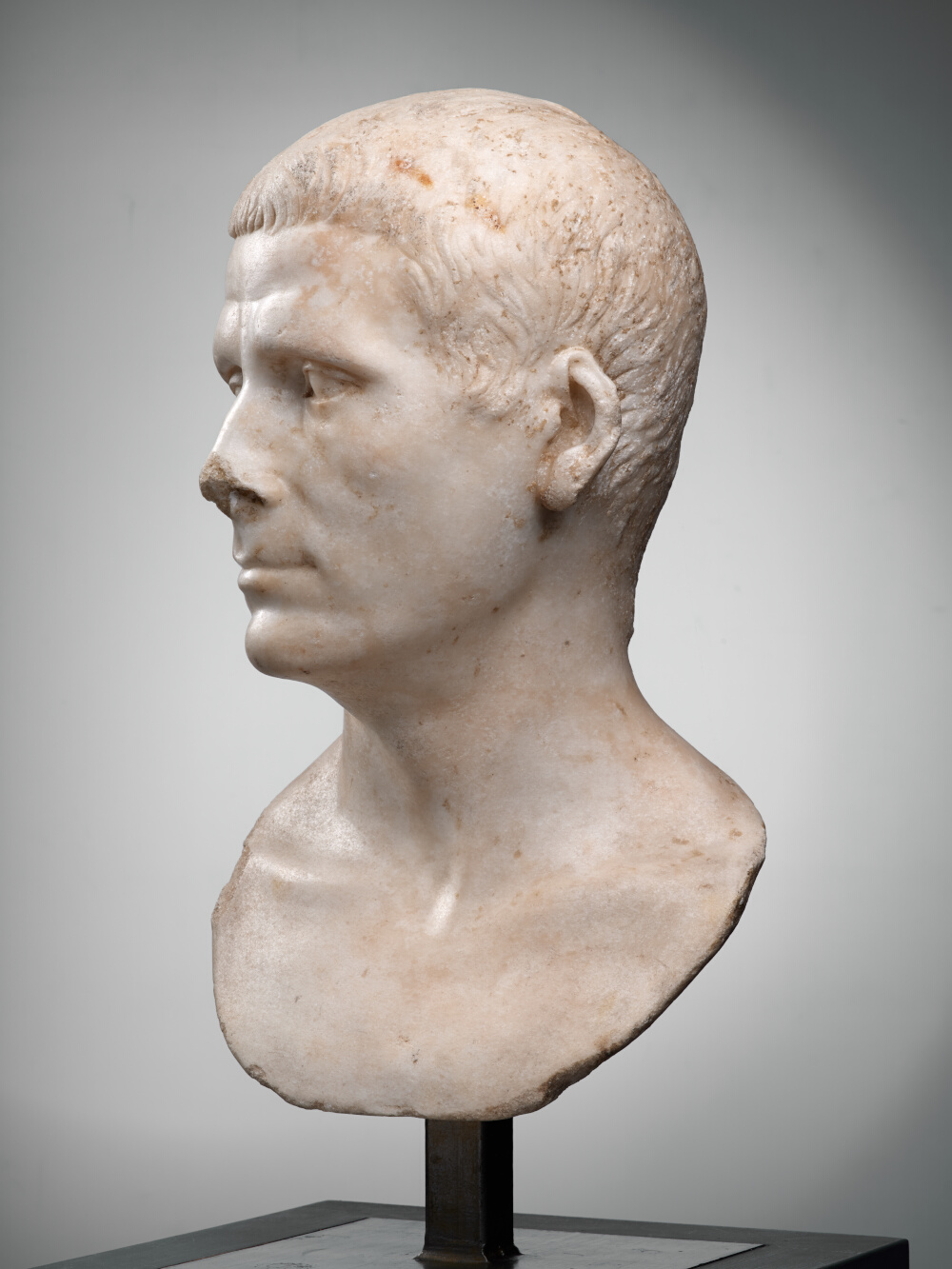
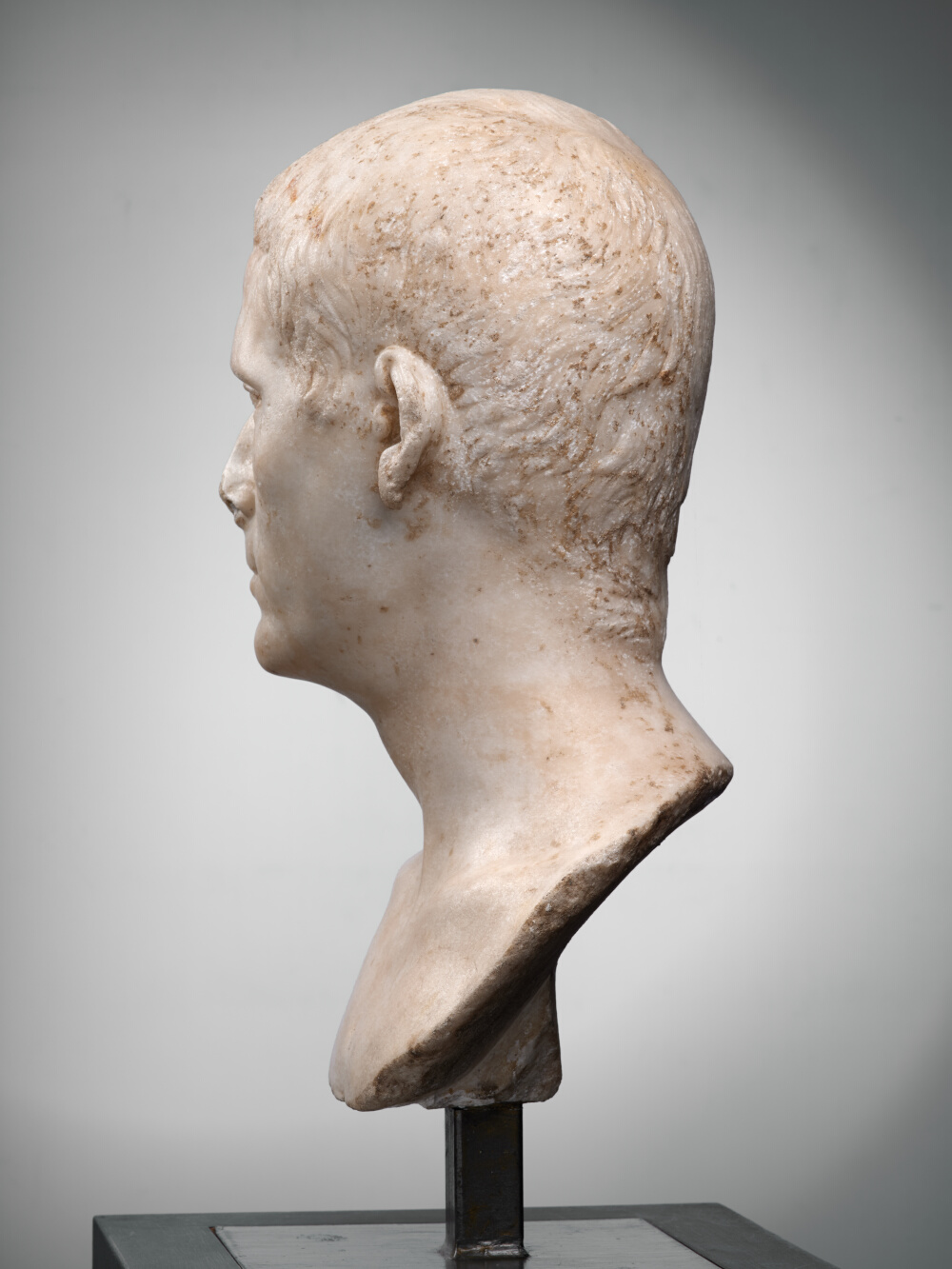
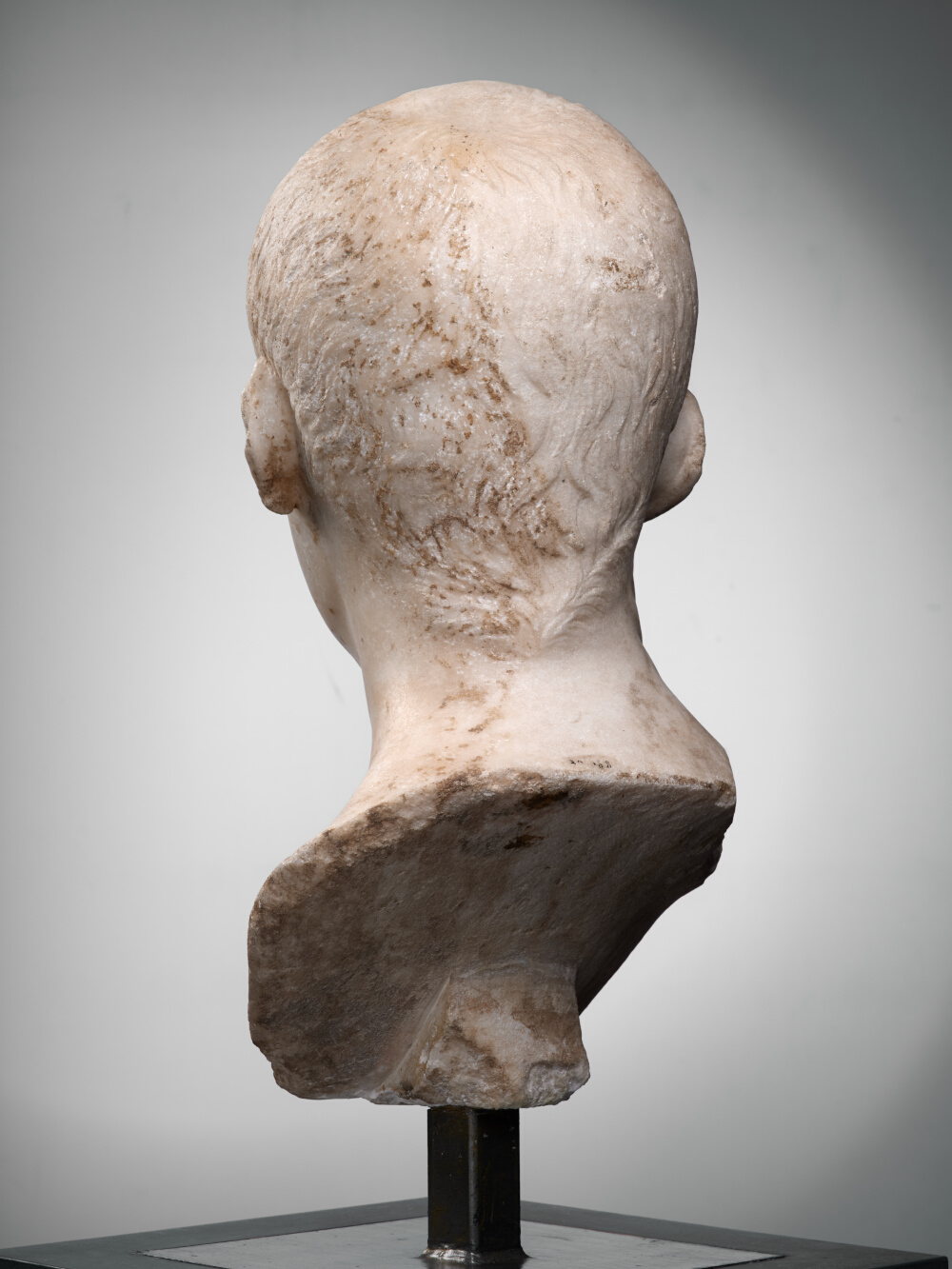
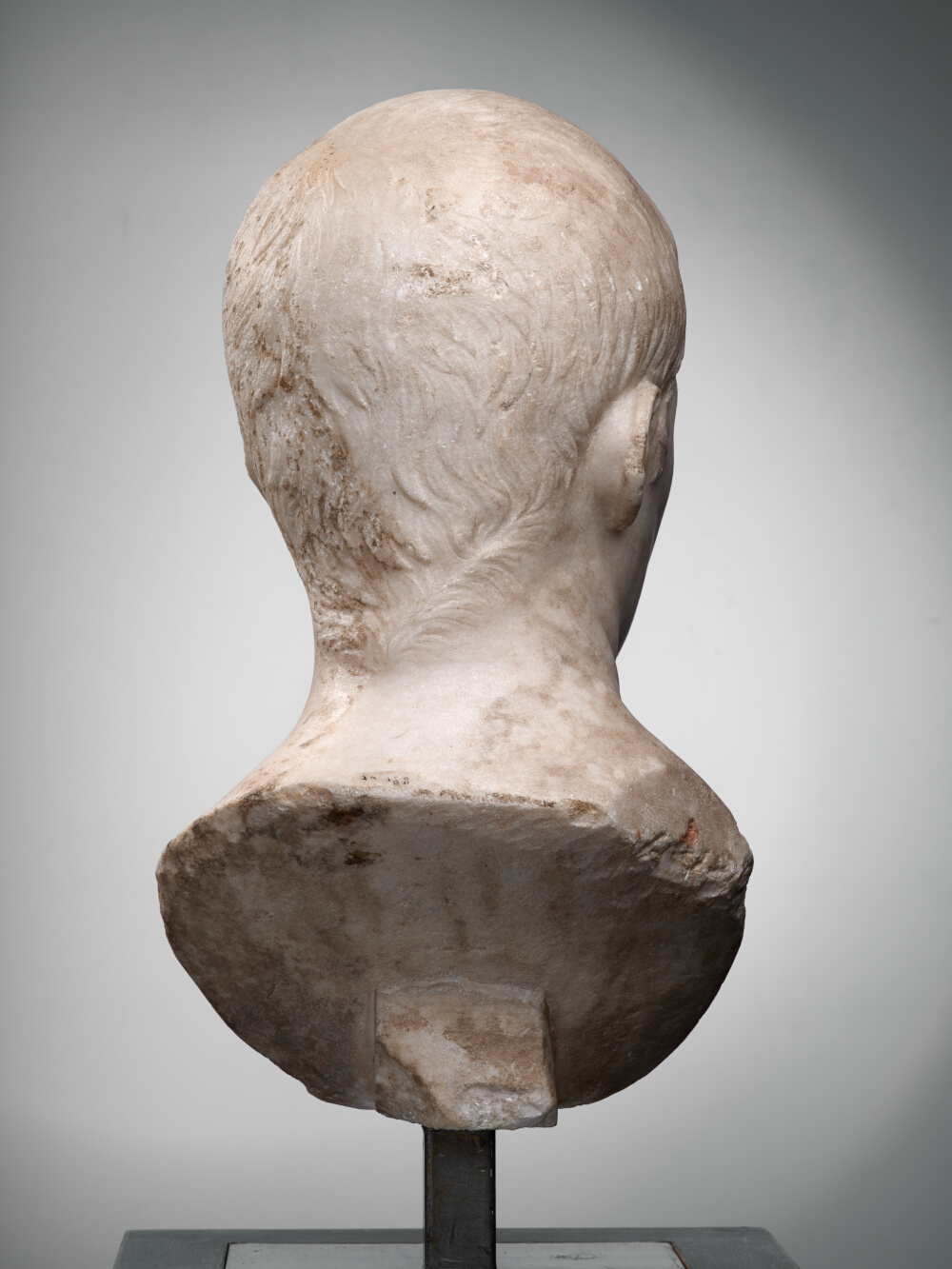
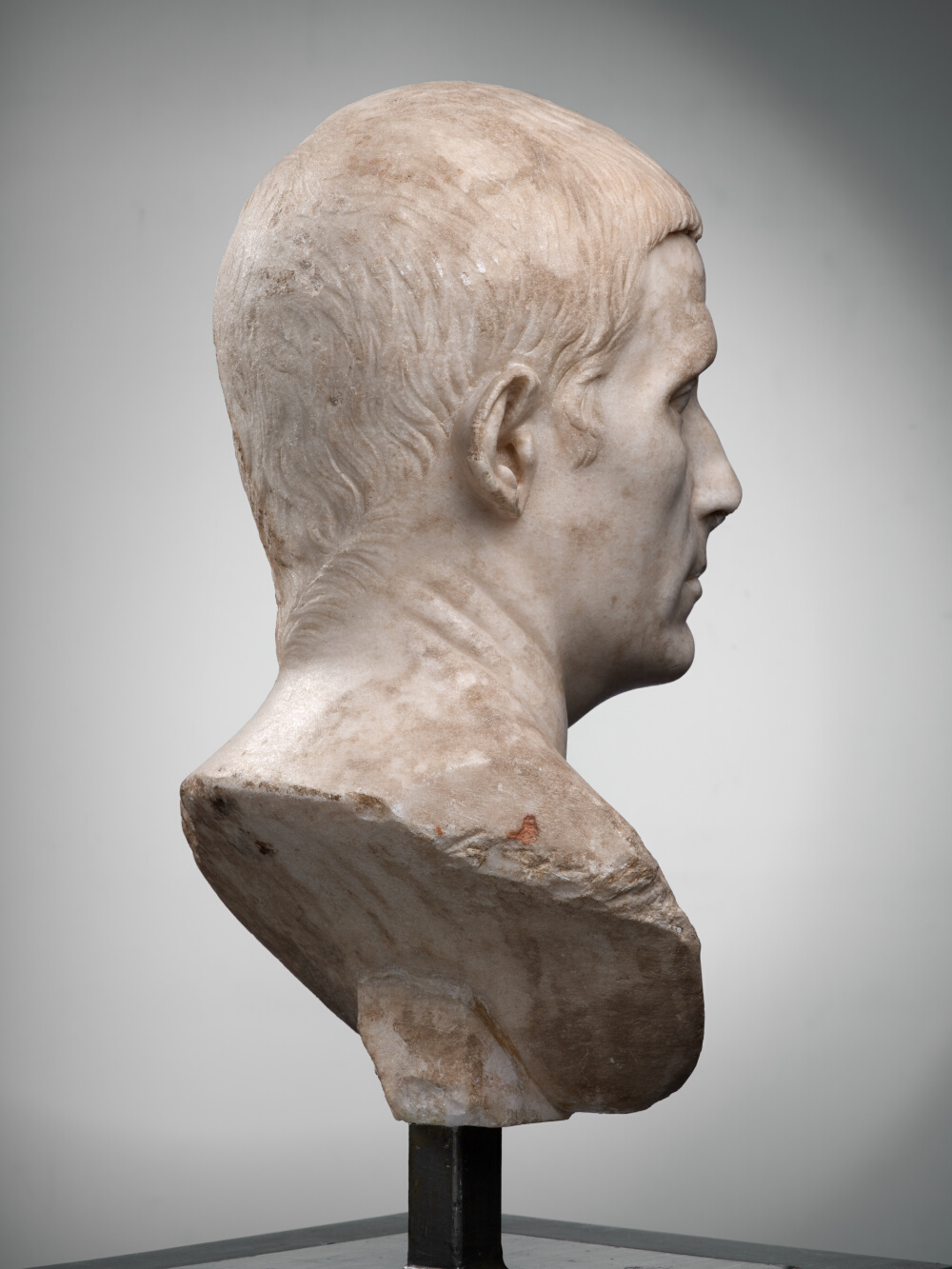
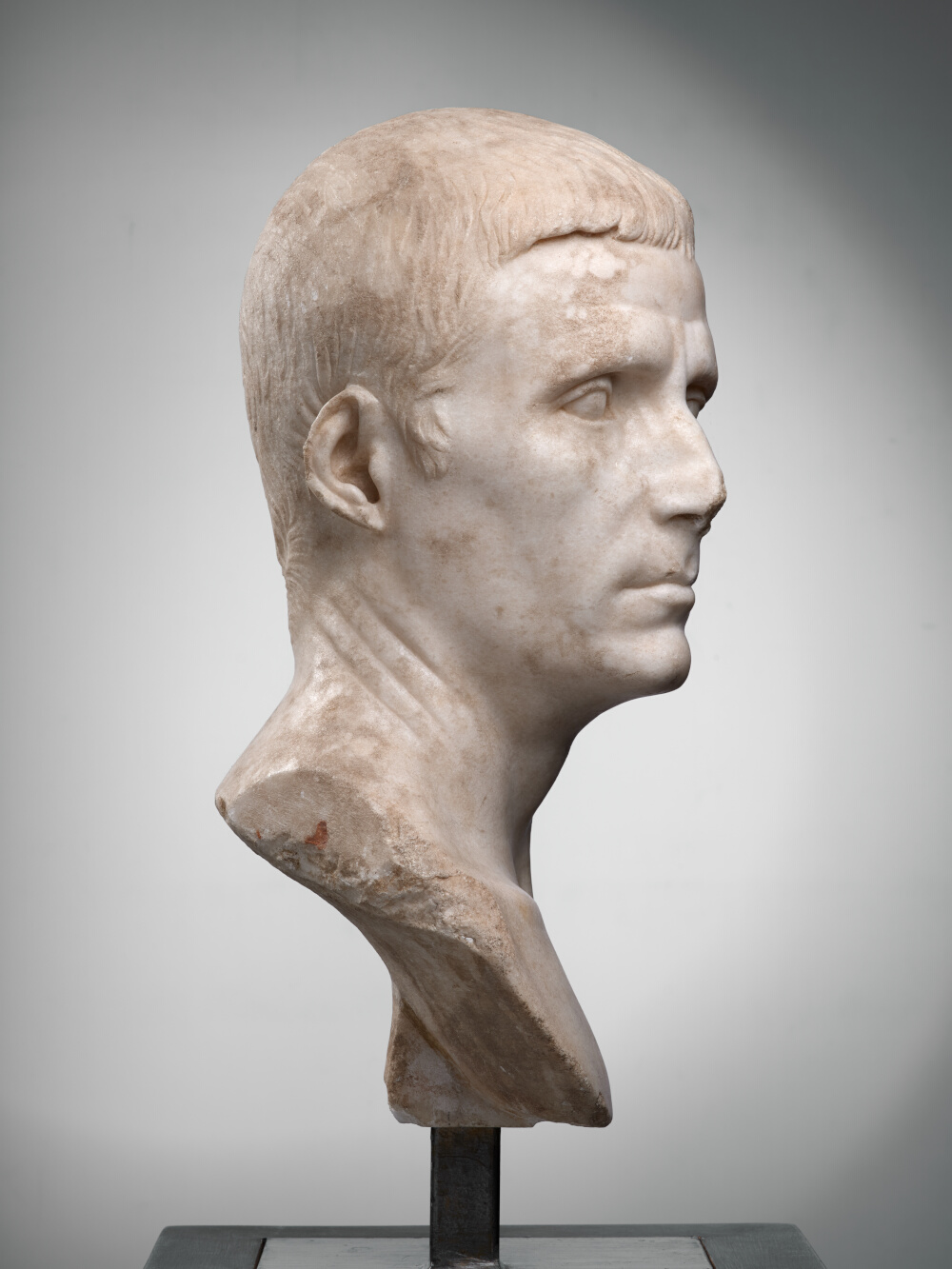
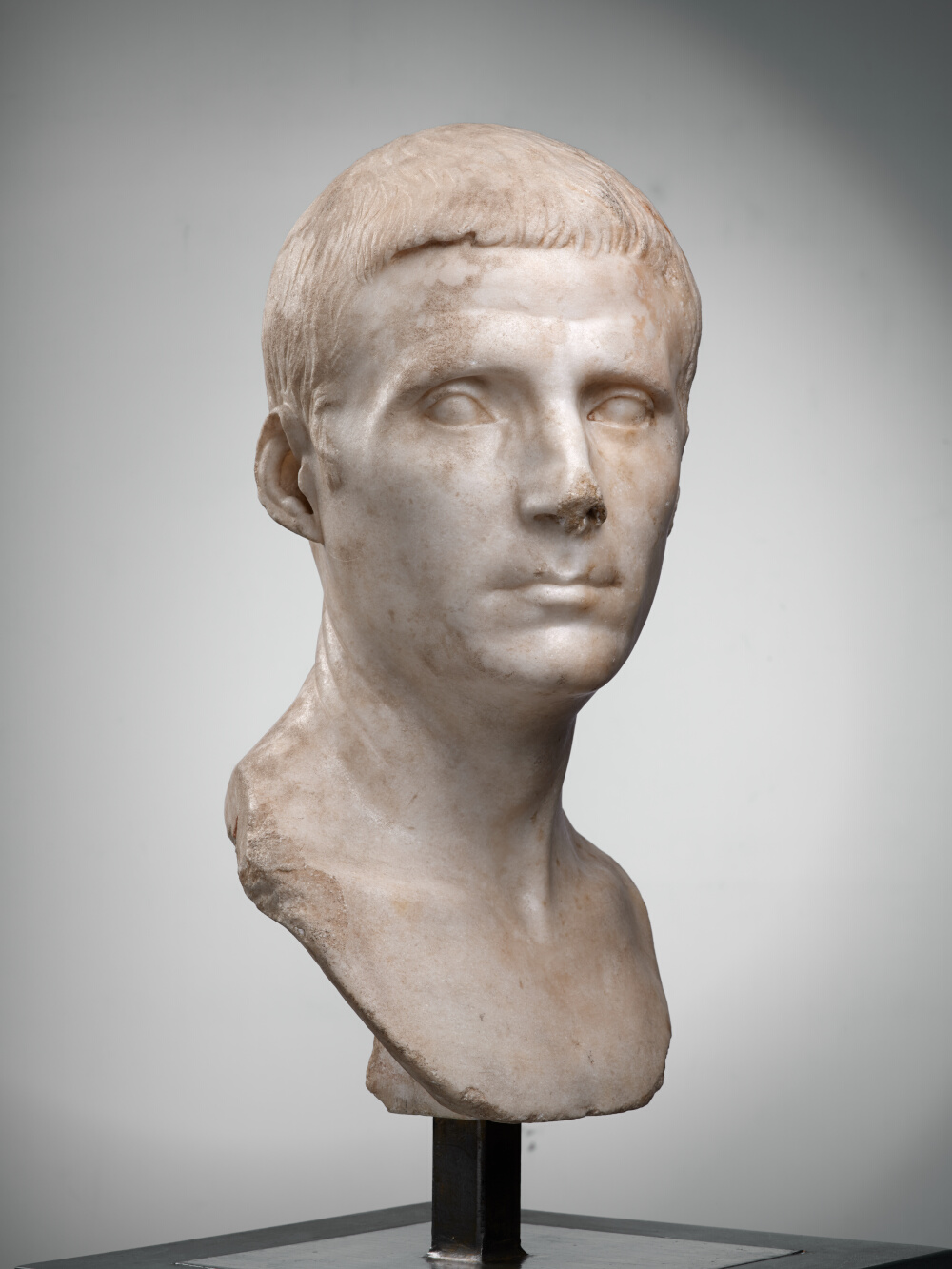
- Date de création
- First quarter of the 1st century
- Material
- Lychnites marble (island of Paros)
- Dimensions
- H. 43,5 x l. 25 x P. 22 (cm)
- Inventory number
- Ra 165
- Photo credits
- Daniel Martin
Formerly believed to be that of Julius Caesar, this portrait was designed according to the principles that were characteristic of the ancient Roman Republic, which favoured realism, austerity and gravity. This person was therefore still attached to traditional values. The likeness shares some similarities with another portrait from Ensérune in Gallia Narbonensis, also thought to be of Caesar at some point in the past.
The short hairstyle is a good example of this attachment to an earlier fashion with very specific moral values. Generally speaking, the rendering of the sickle or comma-shaped strands of hair of the fringe may reflect the wish to imitate the hairstyles of bronze portraits. Above the right eye, the sculptor has sought to lessen the harshness of the fringe by lifting it from the forehead, using a trepanning tool to create an underlying hollow. Another noteworthy feature of the hair in this portrait: behind the right ear and at the nape of the neck, there is a very unusual oblong-shaped area of spiky hair, which no doubt corresponded to the way in which the model’s hair actually grew. In addition to the rendering of the hair, there is also the rounded shape of the bust, which is characteristic of that particular time. These distinctive elements allow us to date this magnificent portrait to the second half of the reign of Augustus or the beginning of the reign of Tiberius; that is to say to the first twenty years of the first century.
According to J.-C. Balty 2005, Les portraits romains, 1 : Époque julio-claudienne, 1.1 (Sculptures antiques de Chiragan (Martres-Tolosane), Toulouse, p. 127-144.
Bibliography
- Balty, Cazes 2005 J.-C. Balty, D. Cazes, Les portraits romains, 1 : Époque julio-claudienne, 1.1 (Sculptures antiques de Chiragan (Martres-Tolosane), Toulouse. p. 63-67, fig. 38-41, p. 129-142, fig. p. 128-132, 134, 138, 140, 143-144
- Bergmann 1999 M. Bergmann, Chiragan, Aphrodisias, Konstantinopel : zur mythologischen Skulptur der Spätantike (Palilia), Wiesbaden. p. 28-30, no 147
- Braemer 1963 F. Braemer, L’Art dans l’Occident romain, trésors d’argenterie, sculptures de bronze et de pierre. Exhibition, Palais du Louvre, Paris, July - October 1963, Paris. p. 173, no 780
- Cazes et al. 1999 D. Cazes, E. Ugaglia, V. Geneviève, L. Mouysset, J.-C. Arramond, Q. Cazes, Le Musée Saint-Raymond : musée des Antiques de Toulouse, Toulouse-Paris. p. 120
- Espérandieu 1908 É. Espérandieu, Recueil général des bas-reliefs de la Gaule romaine, 2. Aquitaine, Paris. p. 173, no 973
- Gonse 1904 L. Gonse, Les chefs-d’oeuvre des musées de France : Sculpture, dessins, objets d’art, Paris. p. 330
- Joulin 1901 L. Joulin, Les établissements gallo-romains de la plaine de Martres-Tolosane, Paris. p. 332, pl. XVII, no 263 E
- Labrousse 1956 M. Labrousse, De l’art des Gaules à l’art français, Toulouse. p. 31, no 33
- Massendari 2006 J. Massendari, La Haute-Garonne : hormis le Comminges et Toulouse 31/1 (Carte archéologique de la Gaule), Paris. p. 242, fig. 99
- Poulsen 1937 F. Poulsen, Probleme der römischen Ikonographie (Archaeologisk-kunsthistoriske meddelelser), Copenhagen. p. 21, no 2, pl. XXXIX-XL
- Pugliese Carratelli 1997 G. Pugliese Carratelli, Enciclopedia dell’arte antica classica e orientale : secondo supplemento, 1971-1994, Rome.
- Queyrel 1992 F. Queyrel, « Antonia Minor à Chiragan (Martres-Tolosane, Haute-Garonne), » Revue Archéologique de Narbonnaise, t.25. p. 79-80
- Rachou 1912 H. Rachou, Catalogue des collections de sculpture et d’épigraphie du musée de Toulouse, Toulouse. p. 69, no 165
- Salviat, Terrer 1980 F. Salviat, D. Terrer, « À la découverte des empereurs romains et de leur famille, à travers les historiens et les portraits de Gaule Narbonnaise, » Les dossiers de l’archéologie, 41, pp. 6–87. p. 12-15
- Vessberg 1941 O. Vessberg, Studien zur Kunstgeschichte der römischen Republik (Skrifter utgivna av Svenska Institutet i Rom), Lund. p. 226
- Veyne 2009 P. Veyne, Die Kunst der Spätantike : Geschichte eines Stilwandels, Stuttgart. p. 54
- Zanker 1981 P. Zanker, « Das Bildnis des M. Holconius Rufus, » Archäologischer Anzeiger, pp. 349–361. p. 361, no 39
- Musée Saint-Raymond 1990 Musée Saint-Raymond, Le cirque romain. Exhibition, Musée Saint-Raymond, Toulouse, 1990, Toulouse. p. 52-53, no 8
- Musée Saint-Raymond 1995 Musée Saint-Raymond, Le regard de Rome : portraits romains des musées de Mérida, Toulouse et Tarragona. Exhibition, Mérida, Museo nacional de arte romano ; Toulouse, Musée Saint-Raymond ; Tarragone, Museu nacional arqueològic de Tarragona, 1995, Toulouse. p. 212
To cite this notice
Capus P., "Bust of an unknown man", in The sculptures of the roman villa of Chiragan, Toulouse, 2019, online <https://villachiragan.saintraymond.toulouse.fr/en/ark:/87276/a_ra_165>.